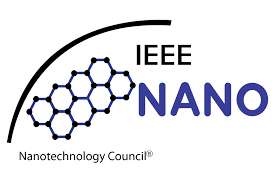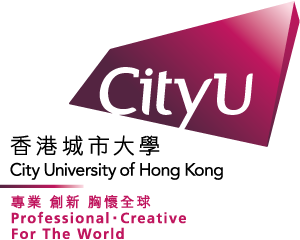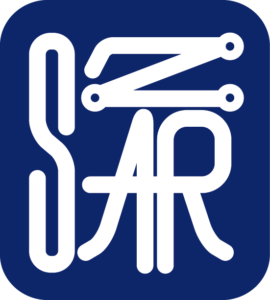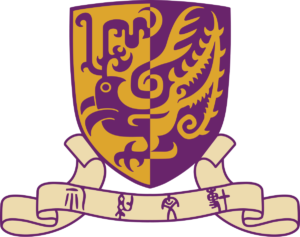Keynote Lecture 1
Demonstration Hall, 1/F
December 2 (Saturday), 9:30-10:10
Terahertz Near-Field Microscopy
Haewook HAN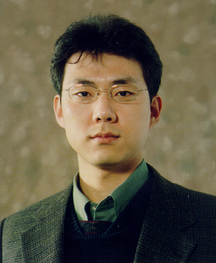
Department of Electrical Engineering
Pohang University of Science and Technology (POSTECH)
Pohang, Korea
E-mail : [email protected]
Abstract: Terahertz time-domain spectroscopy (THz-TDS) has recently been a powerful tool for probing fundamental low-energy dynamic processes in solid-state and biological materials. Understanding such low-energy THz dynamics has become crucial for developing next-generation electronic and optical devices. To realize THz-TDS with subwavelength resolution, various types of near-field imaging techniques have been combined with THz-TDS. At present, scattering-type scanning near-field optical microscopy (s-SNOM) seems to be the most viable technique that can offer nanoscale resolution and broadband THz spectroscopy simultaneously. In this work, we report a THz s-SNOM system that has recently been developed by combining a tapping-mode atomic force microscope (AFM) and a conventional THz-TDS system. Combined with THz-TDS, THz near-field microscopy based on an atomic force microscope is a technique that, while challenging to implement, is invaluable for probing low-energy light-matter interactions of solid-state and biomolecular nanostructures, which are usually embedded in background media. We experimentally demonstrate a broadband THz pulse near-field microscope that provides subsurface nanoimaging with a nearly frequency-independent lateral resolution of 90 nm, corresponding to ∼λ/3300 at 1 THz.
Biography: Prof. Haewook HAN is the Director of Nano-Bio THz Photonics Laboratory, Department of Electrical Engineering, POSTECH, Korea. He was also the Directors of the Center for THz Photonics (1998-2000) and the National Laboratory for Nano-THz Photonics (2005-2009), both funded by the Korean Ministry of Science and Technology. He received B.S. and M.S. degrees in Electrical Engineering from Seoul National University, Korea in 1986 and 1988, respectively, and Ph.D. degree in Electrical Engineering from Prof. Coleman’s group at the University of Illinois at Urbana-Champaign (UIUC), Urbana, USA in 1995, where he studied advanced semiconductor lasers: strained quantum-well (QW) lasers and two-dimensional photonic crystal lasers. At Bell Laboratories, Murray Hill from 1995 to 1997, he developed high-power high-speed (up to 20 GHz) strained QW lasers. After joining the faculty of POSTECH, he has been pursuing interdisciplinary research on Nano-Bio THz Photonics. His current research focuses on THz spectroscopy of biomolecular systems and quantum matters, THz spectroscopic near-field nanoscopes, and THz biomolecular devices. He founded the Korea THz Forum and the THz-Bio Quantum Forum in 2008 and 2011, respectively. He has served as Program Chairs for many international conferences, including the International Conference on Infrared, Millimeter, and Terahertz Waves (2009) and the International THz-Bio Workshop (2010-2016). He is currently the Associate Editors of the IEEE Transactions on Nanotechnology.
Keynote Lecture 2
Demonstration Hall, 1/F
December 2 (Saturday), 13:50-14:30
Microfluidic Reproductive Medicine on a Chip
Da-Jeng YAO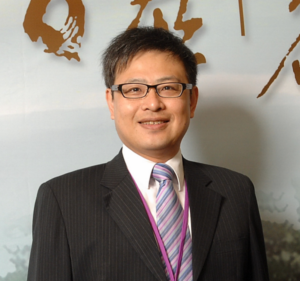
Professor
Department of Power Mechanical Engineering, Institute of NanoEngineering and MicroSystems, Department of
Engineering and System Science
National Tsing Hua University, Taiwan
E-mail : [email protected]
Abstract: The in vitro fertilization (IVF) is an important technique in biological and clinical studies since 1970. In recent years, microfluidic system has been widely used in cell detection or position a single-cell level, including the mechanical, optical, electromagnetic fields due to the advantages of biocompatibility, high-precision, low-cost, disposable, and easy to reproduce etc. In this presentation, we propose three different types of microfluidic systems, the imitation oviduct microfluidic chips, to enhance the probability of embryo fertilization for Oligozoospermia patients.
At the first of the continued microfluidic chip, the motile sperms from the oligozoospermia patients can be separated by using microfluidic chip based on its laminar flow. Then to imitate the oviduct, the oocyte can be effectively position by dielectrophoresis (DEP) technology, and it will be reacted with those motile sperms to form embryo under proper cultural environment. Finally, the reacted oocyte, embryo, was moved to incubator for further culture. The embryo can be cultured successfully after three and an half day, that is comparable with the one by using traditional IVF.
In contract with continued microfluidic system, two types of droplet-based microfluidic system would be presented. The dynamic culture is demonstrated with a system for EWOD that can manipulate a single droplet containing one mouse embryo to mimic the path from an oviduct to a uterus. A static mouse embryo culture on EWOD chips is presented for comparison with the results of dynamic culture. According to the dynamic and static results, the rate of embryo cleavage to hatching blastocyst with a dynamic culture is greater than that with a static culture. The EWOD system can enhance the culture of mouse embryos in a dynamic environment.Another droplet-based microfluidic system will also be shown, not just only for the embryo droplet formation from sperms and oocyte, but further for dynamic culture in the microchannel.
Biography: Dr. Da-Jeng YAO is a Professor at Department of Power Mechanical Engineering and Institute of NanoEngineering and MicroSystems (NEMS), also an adjunct Professor at Department of Engineering System and Science, National Tsing Hua University, Taiwan. He received his MS from Department of Mechanical Engineering, Lehigh University in 1996, and Ph.D. from Department of Mechanical and Aerospace Engineering, University of California at Los Angeles (UCLA) in 2001.
His research can be divided into four categories: Bio-sensing system, including proteins detection, DNA sequencing recognition, and intelligent gas sensing system; Multi-electrode arrays for brain research; EWOD (Electrowetting on Dielectrics) on microfluidic system; and Microfluidic Reproductive Medicine on a chip. He got Wu-Da-Yu Memorial Award (Young Investigator) from National Science Council in 2009, Shen-Yin award in 2010, Young Researcher from Society of Theoretical and Applied Mechanics of the Republic of China in 2012, National Innovation Award in both 2012 and 2014, and Nanoscience Award by Publishing Division of Cognizure in 2015. He was awarded as ASME fellow since 2013.
Keynote Lecture 3
Demonstration Hall, 1/F
December 3 (Sunday), 11:20-12:00
A Microfluidic Platform for Single Cell Antimicrobial Susceptibility Testing and Pathogen Identification
Pak Kin WONG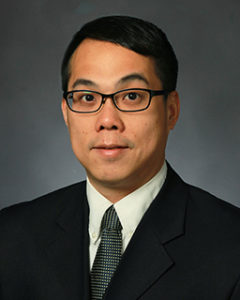
Professor
The Pennsylvania State University
[email protected]
Abstract: Acute bacterial infections are a major cause of patient morbidity and represent a significant burden of the healthcare system. Accurate and timely pathogen diagnostics will improve the clinical management of infectious diseases. Pathogen detection and antimicrobial susceptibility testing (AST) are performed on patient samples, such as blood, urine, and wound swabs, to detect pathogens and their resistances. Conventional culture-based analysis, however, requires at least 2–3 days for bacterial growth and could be much longer for slow-growing bacteria. The lack of a rapid diagnostic method, in turn, drives the improper use of broad-spectrum antibiotics, which accelerates the emergence of antimicrobial resistance in pathogens. Therefore, rapid AST and pathogen identification represent key technological hurdles in managing infectious diseases and combating multidrug-resistant pathogens. To address the hurdles, my laboratory establishes a tunable microfluidic device that traps bacteria according to their physical size for bacteria categorization and AST in as little as 30 minutes. We have also developed a nanobiosensor for rapid pathogen identification at the single cell level. We demonstrate the clinical applicability of the techniques by urine and blood samples from patients with infection.
Biography: Pak Kin WONG is a Professor of Biomedical Engineering, Mechanical Engineering, and Surgery at the Pennsylvania State University. Prior to Penn State, Dr. Wong was a faculty in the Departments of Aerospace and Mechanical Engineering and Biomedical Engineering at the University of Arizona. He received his Ph.D. from the University of California, Los Angeles in 2005. Dr. Wong’s research focuses on bioengineering techniques for elucidating collective cell migration in tissue regeneration and cancer metastasis, and developing microfluidic systems for medical diagnostics. He has published over 90 peer-reviewed journal articles in the area of nanotechnology and biomedical engineering, and is an inventor of three patents. He is an editor of Scientific Reports, IEEE Transaction on Nanotechnology, IEEE Nanotechnology Magazine, and SLAS Technology. Among other honors, Dr. Wong received the NIH Director’s New Innovator Award in 2010, Arizona Engineering Faculty Fellow in 2011, AAFSAA outstanding Faculty Award in 2013, and JALA 10 – A Top 10 Breakthrough in Innovation in 2015.Dr. Wong is a Fellow of Royal Society of Chemistry (RSC), American Institute of Medical and Biological Engineering (AIMBE), and Society for Laboratory Automation and Screening (SLAS).
Keynote Lecture 4
Demonstration Hall, 1/F
December 3 (Sunday), 13:00-13:40
Drug-Delivery and Imaging Applications of Nanodiamonds
Edward Kai-Hua CHOW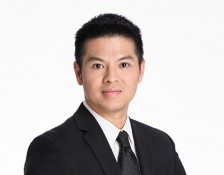
Cancer Science Institute of Singapore
National University of Singapore
E-mail : [email protected]
Abstract: Nanodiamonds (NDs) are ~4nm carbon nanoparticles with a truncated octahedral structure. Due to their unique chemical properties, nanodiamonds are versatile drug delivery nanomaterials that can be functionalized with a broad array of molecules, including small molecules, proteins and genetic material. Furthermore, their size, chemical composition and structure confer a high level of biocompatibility. While numerous studies have demonstrated a diversity of molecular payloads that can be delivered by nanodiamonds, we will discuss specific drug delivery and imaging applications where nanodiamonds have shown distinct improvements over standard methods. In particular, nanodiaonds are powerful tools for improving diagnosis and treatment of cancer. This includes the development of nanodiamond-based anthracycline delivery complexes that are more effective and safer than clinical standards. We will also discuss the efforts and progress that has been made to translate preclinical work on nanodiamond-anthracyclines into the clinic. Unique chemical; properties of nanodiamonds also lend these nanomaterials towards imaging applications. We will discuss some of these imaging modalities, with particular emphasis on how nanodiamonds can improve contrast agent enhanced magnetic resonance imaging (MRI). Specifically, we will discuss how nanodiamond delivery of paramagnetic ions can improve MRI imaging sensitivity over clinical standards as a method for cancer diagnosis. Finally, we will discuss how nanodiamonds may be useful for delivery of emerging therapeutics such as biologics. These recent advances in ND drug delivery of new classes of therapeutics further demonstrate the potential for a ND-based platform for the development of personalized drug-delivery or imaging complexes.
Biography: Edward Kai-Hua CHOW is an Assistant Professor at National University of Singapore (NUS) in the Cancer Science Institute of Singapore and the Department of Pharmacology. His research group is interested in understanding how specific genomic alterations affect cancer progression and how this information can be applied towards engineering-based approaches to improve combinatorial drug delivery and cancer imaging. He received his B.A. in Molecular and Cellular Biology with an Immunology emphasis from the University of California Berkeley. Under the mentorship of Prof. Genhong Cheng at University of California Los Angeles, he earned his Ph.D. identifying key molecular pathway crosstalk mechanisms that affect immune responses and drug metabolism as well as developed and evaluated block co-polymer microfilm drug delivery systems for enhanced host implant tolerance. Prior to joining NUS, Dr. Chow was an American Cancer Society Postdoctoral Fellow under the guidance of Prof. J. Michael Bishop at University of California San Francisco. During this time, he developed a murine system for systematically evaluating how specific oncogenes determine biological properties of cancer stem cells and was the first to demonstrated the potential of nanodiamonds as a drug-delivery and imaging platform for improving cancer therapy and diagnostics in vivo.
Keynote Lecture 5
Demonstration Hall, 1/F
December 3 (Sunday), 13:40-14:20
Multi-stimuli Regulated Nano-micelles for Tumor-targeted Therapy
In-Kyu PARK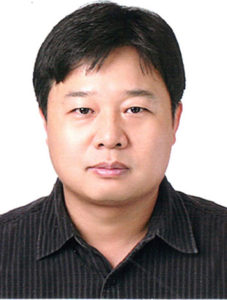
Professor
Department of Biomedical Sciences
Chonnam National University Medical School
Gwangju, Korea
E-mail : [email protected]
Abstract: Owing to the outstanding progress in the nano-medicine field, a variety of nano-carriers have been designed to specifically deliver the cargo to the target site, in response to the specific stimuli. Photo-thermal therapy (PTT) is a light based molecular targeted cancer therapy, which uses electromagnetic radiations most often in infrared wavelength for the treatment of cancer. In this study, we are proposing CD44 targeted IR-780 loaded HA-C18 micelles, which can produce ablation temperature upon laser irradiation. Upon irradiation of the tumor site by laser, tumor cells in the area of illumination would be killed by the heat produced by the NIR dye loaded CD 44 targeted micelles and subsequently reduced the tumor burden. Furthermore, we designed a stimuli responsive, cationic charged micelle as a drug carrier for treatment of peritoneal metastasis. In vivo studies showed enhanced retention efficient inhibition of tumor nodes with no systemic toxicity. Taken together, design of nano carriers responding to exogenous or endogenous stimuli represents an attractive option for triggering the on-demand drug release and thereby enhancing the therapeutic efficacy.
Biography: In-Kyu PARK studied natural fiber science at Seoul National University and obtained his Ph.D. in 2002 under the supervision of Prof. Young Hwan Park and Prof. Chong-Su Cho. He pursued his career at the Department of Biomolecular Engineering, Tokyo Institute of Technology with Prof. T. Akaike, and at the Department of Bioengineering, University of Washington with Prof. Suzie H. Pun. He is currently a full professor in the Department of Biomedical Sciences, Chonnam National University Medical School. He has published over 130 peer-reviewed journal articles, 5 book chapters and 18 patents to his credit.
His research focuses on nanoparticles mediated delivery of therapeutic drug and genes. The fate of those particles in body can be monitored non-invasively by MRI and optical imaging after labelling them with the appropriate imaging agents. Bio-compatible hydrogels and nanogel can be also utilized for delivering bioactive molecules including proteins and vaccines. His specific interest is on the development of specific tissue-targeted multi-functional nanostructures to deliver chemical drugs as well as therapeutic genetic materials, while tracking them simultaneously. He also works on the development of immunomodulatory nanoparticles for cancer immunotherapy.


